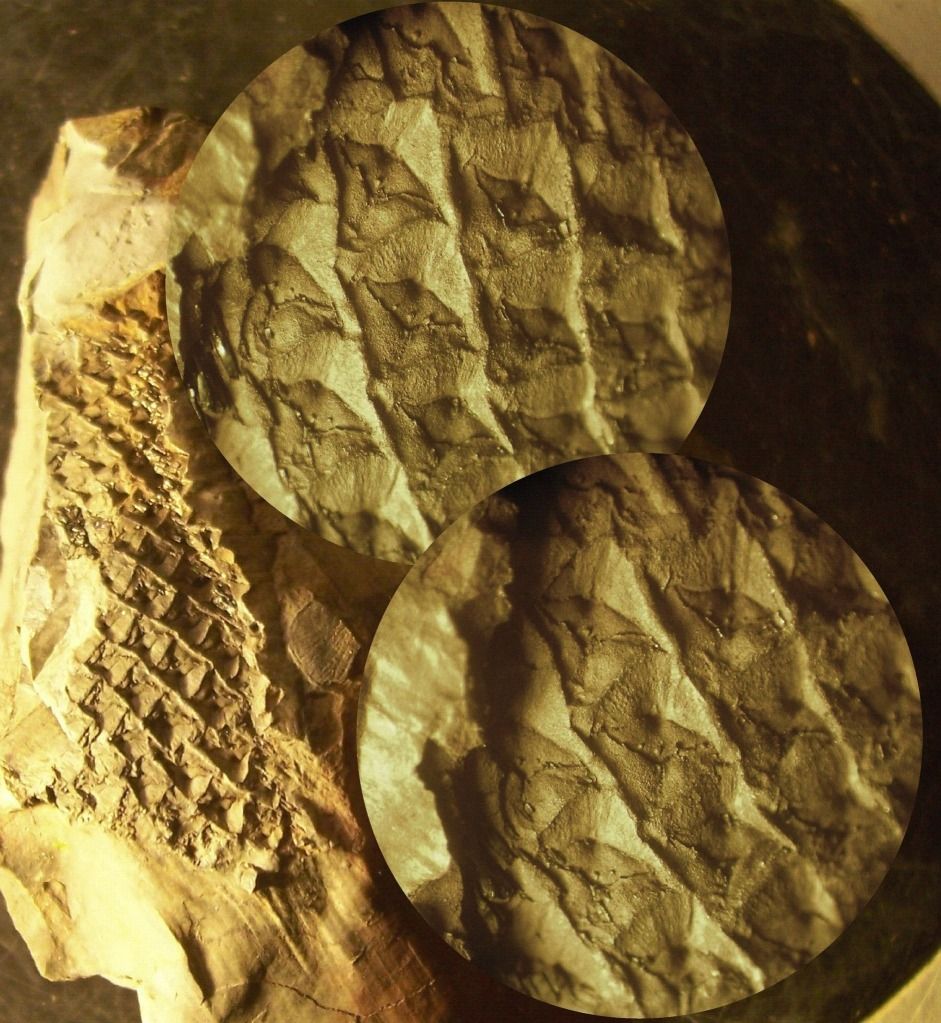Lepidophloios Bark Understanding
All paleobotany amateur know that Lepidophloios leaf cushion is broader then long . That is the main distinguishing feature of Lepidophloios comparing with Lepidodendron which has longer then broad leaf cusion, i.e. vice versa.
Tangential cross scheme to distinguish Lepidodendron from Lepidoploios.
If you look at any paleobotany book you can see the Lepidophloios leaf cushion scheme consist of two nominal area - leaf scar (at the bottom) and remaining part of the leaf cushion above the leaf scar. For instanse, illustration from Taylor and Taylor Paleobotany-The Biology and Evolution of Fossil Plants 2nd ed. Because I found time to time specimens which is different from that leaf cushion morphology I started to search any explanation in different Internet publications and discovered very interesting article by B.A. Thomas - Epidermal studies in the interpretation of Lepidophloios species.

Thomas distinguished 5 types (species) of Lepidophloios leaf cushions as you can see at the pictures below which are a bit converted in computer Thomas' schemes in real.





As could be seen above there were in Carboniferous not only L. laricinus but some others as well. It's difficult sometimes to distinguish Lepidoploios from Lepidodendron. Especially bearing in mind that "Lepidophloios may also have vertically elongate or equidimensional cushions at some developmental stages" (quote from DiMishele).
I have got some specimens which can be ID as Lepidophloios acerosus with three nominal area (above, beneath and leaf scar as it).



But this one you can make a mush easily, because it is a Lepidodendron.

It could be noted the infrafoliar parichnos under the leaf scar at that picture.
Next specimen is from the Kidston collection and positioned there as a Lepidophloios, but in the fact that is a Lepidodendron, probably L. mannebachense like at my specimen next to that one.
Kidston
RK specimen
Lepidophloios acerosus bigger picture

-
 2
2






4 Comments
Recommended Comments